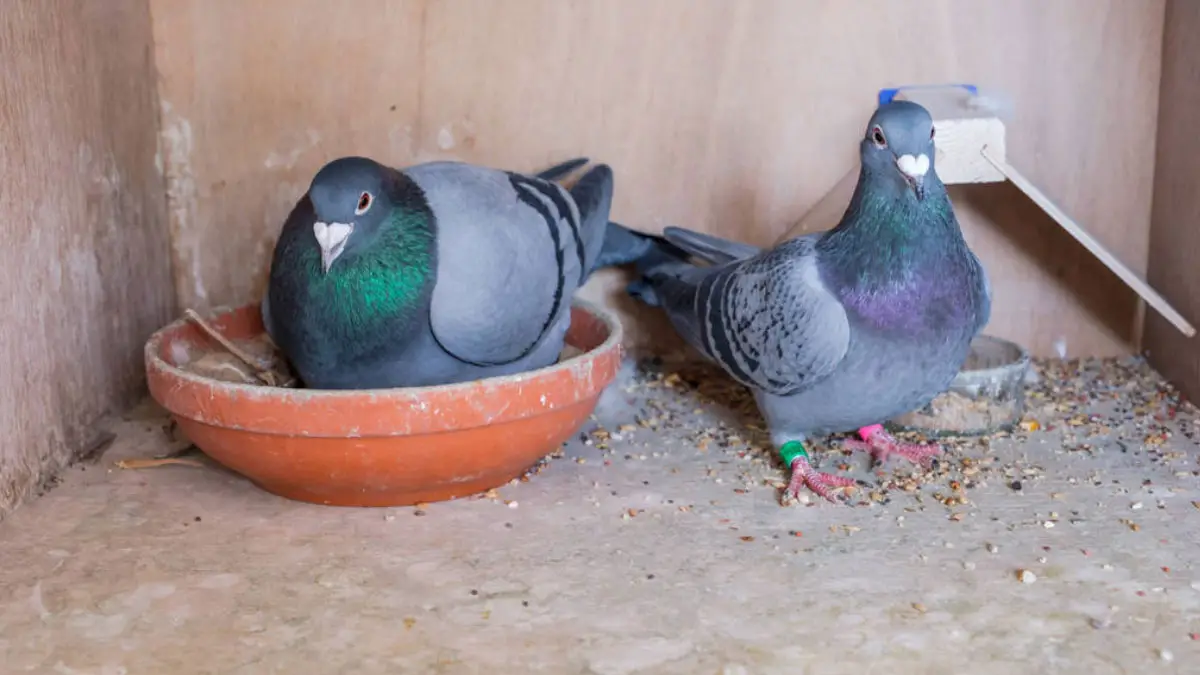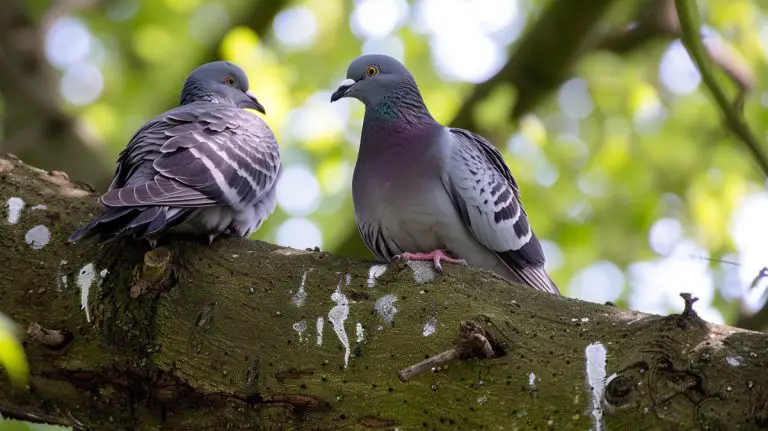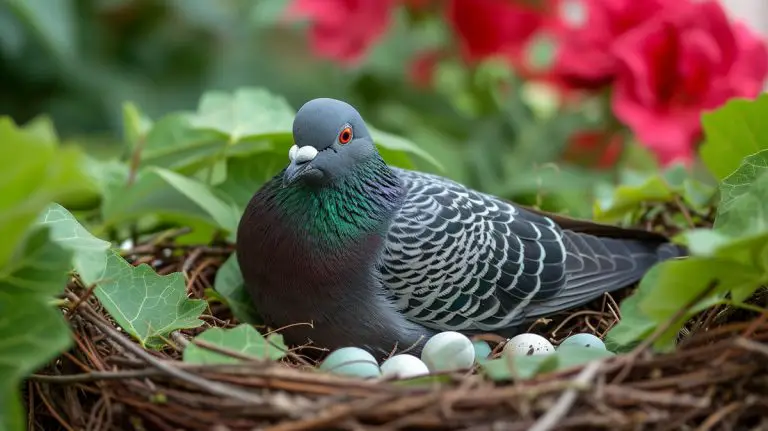Pigeon Nesting And Breeding Habits: A Comprehensive Guide
Male pigeons select the nesting place and pick stems and sticks for approval to present to their female partner. Upon acceptance, the female builds the nest with leaves, sticks, and stems supplied by the male.
Their breeding habit is preceded by severe pigeon courtship rituals, after which they breed throughout the season. To bird enthusiasts and researchers, understanding pigeon nesting and their breeding habits helps equip you with skills and knowledge on handling these birds.
This article will provide the correct information on pigeon nesting and breeding habits. In addition, this article highlights parental care given to young squabs and common breeding and nesting challenges.
Pigeon Nesting Habits
Different pigeon species exhibit different bird nesting behavior. Let’s look at the different nesting habits adopted by pigeons.
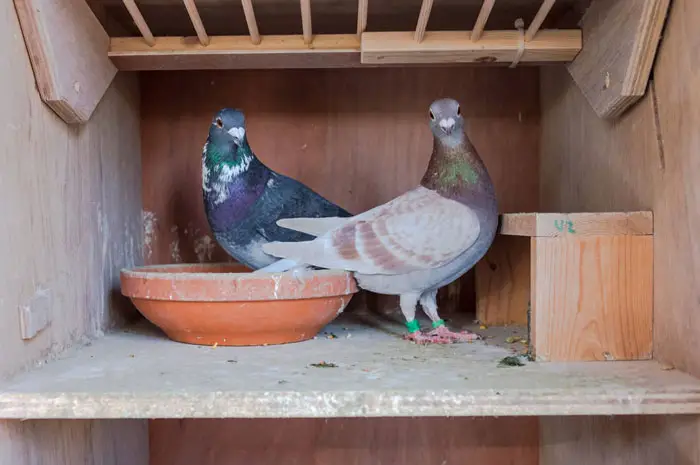
1. Platform Nests
Platform nests are extensively large nests of twigs and large stems joined together in twists. The nest has a flat surface in most instances but may develop a shallow depression as pigeons exert weight at the center.
Platform nests are similar to cup nests but have a flat top surface and are used to house large pigeon species. Pigeons reuse platform nests by adding nesting materials to the existing layers.
2. Cup Nests
Cup nests are the most common pigeon nests that assume the shape of a cup with well-knit walls. These nests are primarily found in twisted twigs and tree branches to assist in holding the sticks together.
Cup nests are common during winter as they are more enclosed, providing much-needed warmth.
3. Scrape Nests
On the other hand, scrape nests are shallow depressions on the ground with sides reinforced with grass, debris, and down lining. These types of pigeon nests are found in areas with few trees and for pigeon species that prefer open fields.
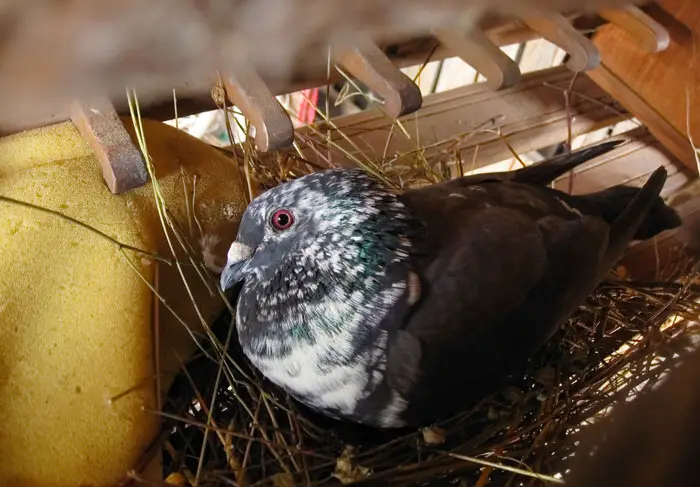
4. Cavity Nests
Common in woodlands where pigeons live in cavities either built by other birds or may excavate themselves. Pigeons may build their preferred nests in the cavities for extra protection.
Some pigeons will identify these cavities in house gaps, especially on roofs. Pigeons mostly build platform nests in these cavities.
Materials Used For Building Pigeon Nests
In the wild fields, pigeons build their nests using twigs, sticks and stem tied together with grass or any available fiber. They use the available materials depending on their location for pigeon nesting.
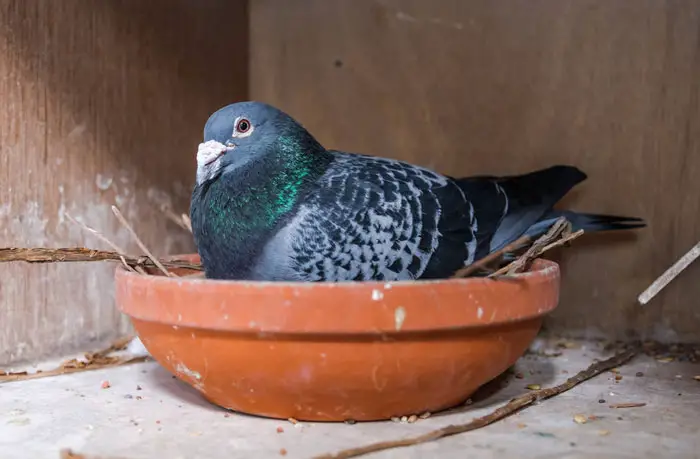
For caged pigeons, you can provide the following materials.
- Pine needles
- Tobacco stalks
- Straw
- Hay
- Nest felt
- Nesting paper
Pigeons prefer to build their nests on safe, dry, and flat nesting habitats such as attics, roofs, under the bridge, ledges, and eaves. At such points, the male identifies and starts cooing with his favorite female partner for courtship and mating.
The male pigeon starts by bringing a twig for nesting and places it in front of the female. The female picks it up, lays beneath her, and builds the nest.
These two mating partners remain together and mate for life, with the female sitting on the nest during the day and the male taking turns overnight. If one of the partners dies or is separated by humans, the one left gets a single partner and continues mating.
The female, upon reaching six months, lays two eggs within 30 days – one egg per day and they both take part in incubating the eggs. The pigeon egg incubation period lasts for 18 days.
Pigeon Breeding Habits
Pigeons start by courting, where the male attracts the female. The bird courtship continues as the male sits at the nesting site cooing at the female partner. Once the female reacts to the males’ signals, they kiss by billing each other. Other courtship behaviors include:
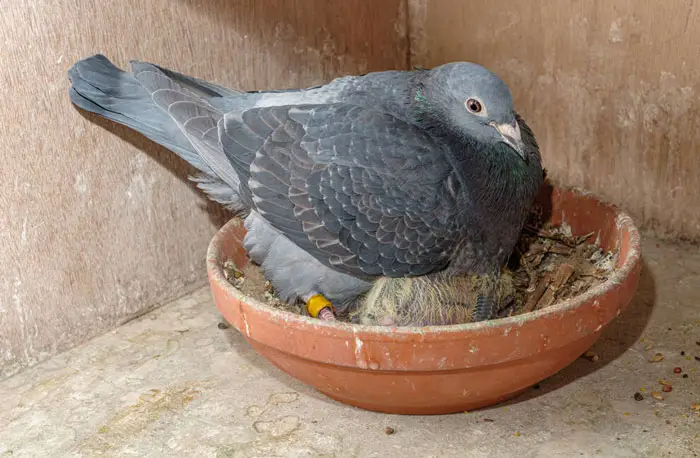
- Preening one another
- Regurgitating food to one another
- Strutting for the females
Pigeon mating behaviors are through copulation. The male copulates by jumping on the back of the female partner and fertilizes the eggs within seconds. The female then lays fertilized eggs for incubation.
Breeding Cycles Of Pigeons And Their Relationship With Environmental Cues.
The pigeon breeding cycle occurs throughout the year if the weather allows it. The breeding cycle starts with courtship in early winter, followed by nest building in late winter.
Most pigeons breed in spring. However, in warm climates, pigeons tend to produce all year long. During the cold season, both males and females provide parental care in pigeons for maximum warmth.

After mating, the female lays the 1st egg after 14 days and the second after 24 – 48 hours. Pigeon eggs require an 18-day incubation period to hatch. Mating partners can have up to four broods in a year if the female can lay eggs.
The pigeon chick development takes place within 30 days, upon which the chicks are ready to start their own life.
The egg-laying pattern is affected during the cold and hot seasons, and they lay dark brown eggs for heat preservation and protection against UV light. In standard warm environments, they lay small white eggs.
Parental Care Behaviors Exhibited By Pigeons
The incubation period takes 18 days, during which both partners take part in sitting on the eggs. The eggs hatch into pigeon chicks and are fed on the milk crop for ten days as they get introduced to regular food.
During this period, the squabs get pigeon parental care and protection from predators.
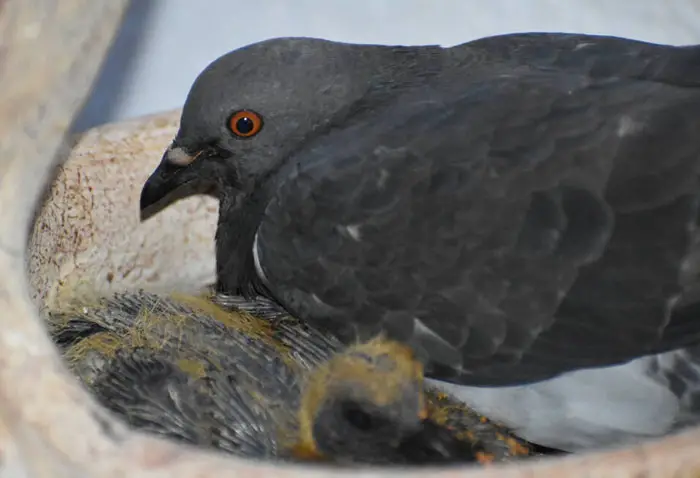
The squabs develop young feathers within three weeks and grow twice in size due to their feeding behavior. Between weeks four and five, the squabs reach their full-grown weight, and at that point, they weigh the heaviest in their life.
Within 30 days, the fledgling development is attained, and the squabs are ready to start living independently. The male pushes them off the nests and trains them how to survive. They learn how to fly and lose body weight as they harden.
Common Nesting And Breeding Challenges
Young pigeons are often predated for their tender meat and unique feathers and therefore require bird parental care. They are predated on by humans, pests, and parasites and suffer from diseases in their habitats.
Some natural predators include; hawks, eagles, falcons, snakes, and foxes, which attack the nests and feed on the pigeons and the eggs. Human beings also pose a threat by destroying their brooding habitats.
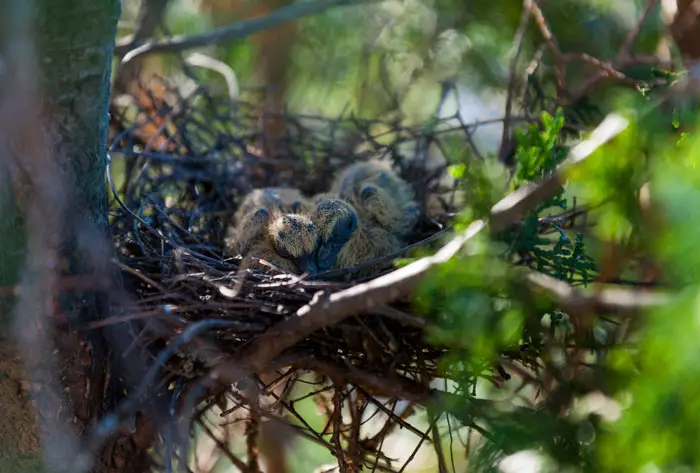
The most common diseases that affect pigeons include;
- Tuberculosis
- Pigeon pox
- Salmonellosis
- Candida
- Trichomoniasis
Some pigeon species, such as the pink pigeon, are prone to extinction, with about 500 birds remaining worldwide.
Conservation programs started by bird enthusiasts and researchers such as Durrell Wildlife Trust and Mauritian Wildlife Foundation have been vital in preserving the remaining pink pigeon species.
Bird breeding organizations have been at the forefront of protecting pigeons, especially in dangerous areas. Some also secure the threatened species in zoos and continue breeding to safeguard the bird species.
Research institutions and non-governmental organizations have continuously called for the protection of the pigeon’s breeding habitats and nesting areas.
Pigeon nesting and breeding habits offer a captivating glimpse into the reproductive behaviors and strategies of these birds. Exploring the intricate process of nest building, incubation, and parental care can provide valuable insights into the world of pigeons. Additionally, understanding the ethics of pigeon racing is essential when discussing the impact and treatment of racing pigeons. Our article on the ethics of pigeon racing delves into the various perspectives surrounding this popular sport and raises important questions about animal welfare. For those interested in participating in pigeon racing, having access to a pigeon racing calendar can be invaluable. Our pigeon racing calendar provides a comprehensive resource for tracking race schedules, events, and important dates in the world of pigeon racing. By exploring both the nesting and breeding habits of pigeons and the ethics of pigeon racing, you can gain a deeper appreciation for these remarkable birds and the sport that revolves around them.Conclusion
Pigeons exhibit unique nesting and breeding habits with a procedural pattern involving courtship, nest construction, mating, incubation, and parental care for the squabs.
Due to constant predation on pigeons, there is a need for continued efforts to protect pigeon populations and their nesting habitats through conservation and education.
For more information about pigeon nesting and breeding habits, read materials such as national geographic on pigeons and bird articles such as Trinidad birding.
